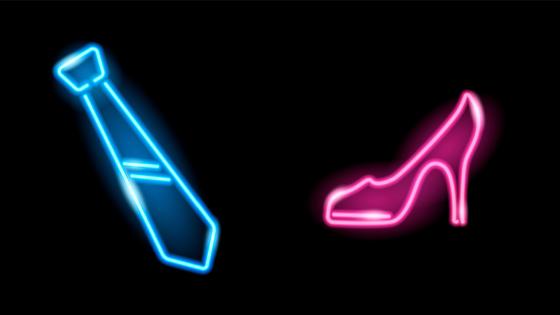How a dress code helps your company succeed and grow
Employee appearance is a mirror of your organization's corporate culture.

A dress code can help communicate your company's values to potential customers, make it easier to build trust with them, and simultaneously bring the workforce together. That is why many companies are not ready to abandon the dress code despite the new loyalty trend to employees' appearance, and they are right to do so!
We will tell you what a dress code may be, the advantages of a single style, and how it contributes to the company's development.
Types of Dress Codes
Different companies have different dress codes. So do not think that this is only a dull and grey uniform because business style is not the same as style. The dress code can be bright colors and prints, if appropriate and consistent with the corporate culture. Therefore, in most cases, the CEO decides what style to adhere to for their employees. However, there are three universal and most common business dress codes, which vary in the degree of "seriousness" between them:
1. Business best. For men, it involves suits in dark colors - blue or grey, but not black! Also, the shirt must be white, and the shoes must be classic, such as oxfords, derbies, or loafers. Women should also be dressed in navy blue or grey tones. Preferably a skirt suit or a closed dress, but you can also wear a straight skirt with a light-colored blouse (remember that tights should be flesh-colored!). Footwear is also essential: choosing flat-soled or low-heeled shoes is best. Such strict rules are especially relevant for the banking and legal sectors. Undoubtedly they will help you make an impression of a solid professional!
A little less conservative is the following style:
2. Business traditional - is more casual and comfortable office wear, which implies a little more freedom, in contrast to the strict and too serious business best. Here the color of the shirt could range from beige to light pink, blue, or yellow. Ties, meanwhile, can be more colorful, but you should still beware of overly flashy or abstract prints. Female employees should also remember this when choosing business attire: business tradition allows you to choose colors such as red, green, orange, fuchsia, burgundy, and terracotta. Office shoes, meanwhile, can be replaced by more comfortable loafers.
However, the following style is considered the most comfortable and democratic:
3. Casual. In this style, the employees have a much wider choice of attire, ranging from sweaters, cardigans, and jumpers, short sleeve shirts, and comfortable slip-on shoes. Colors and prints can be any and even the most unusual. However, therein lies the main difficulty because the previous two styles are supposed to have clear rules, and casual is an improvisation, a balanced combination of etiquette and your unique taste. Casual does not prohibit even jeans or elements of sportswear, but only if you look stylish, elegant, and at the same time businesslike.
It is important to remember that employees should demonstrate professionalism and respect for clients and management through their appearance. However, many employees fear losing their individuality and becoming part of the "faceless mass." Don't fret: even within the strictest of styles. You can use accessories that reflect your personal qualities, outlook, and lifestyle, such as jewelry, brooches, badges, or stickers on stationery. The course "Personal Brand Basics" will teach you how to discover your personality, develop your taste and position yourself appropriately - the First Steps to Growing Popularity. Now let's look at the key benefits of a dress code and how it can affect business development.
Why does a company need a dress code? The main benefits of a uniform employee style

RA uniform dress style for all employees creates a memorable impression and allows customers to see the company as a whole. Thus, colleagues immediately state that they are a cohesive, friendly, and organized team, not just a set of people united solely by the place of work. Agree; it is always a pleasure to see them working together for the client's comfort and enjoyment.eason #1. The dress code is a key component of the company's image
Reason #2. Dress code strengthens corporate morale
As well as having a positive impact on customers, a dress code also boosts the performance and productivity of employees. A sense of unity within the team stimulates motivation, interest in work, and achieving high results. Moreover, in the opinion of many experts, strict clothing in the style of business best or business traditional disciplines employees, puts them in a good frame of mind and encourages them to concentrate.
Reason No. 3. A unified style enhances brand recognition
Corporate colors and specific attributes for employees, such as neckerchiefs or badges, all influence the advertising image of the brand. The most striking example is flight attendants' dress code - think international airlines such as Thai Airways, Air India, and AeroSur. For instance, Thai flight attendants wear long, colorful dresses that cover their entire bodies. Indian flight attendants wear their traditional saris in company colors. On the flip side, the Bolivian stewardesses are used to high heels and lots of jewelry. Such daring images of employees allow you to remember the company forever, even if you only come across it once.
Reason #4. The adaptation process for new employees is much quicker
A newcomer is likelier to feel part of a team if all employees are united by a common style of dress, company colors, or minor accessories. A general corporate dress code creates a psychologically safer and more comfortable environment for new employees, allowing them to get used to the team and define their roles.
Reason #5. The dress code makes life easier for employees
In those companies where a dress code is mandatory, employees find it much easier to navigate which clothes are appropriate and which are too flashy or just plain inappropriate. It also obviates the need for a picky wardrobe every morning, thereby facilitating time management.
Thus, the dress code is not only a reflection of the status of the company and its employees but also an opportunity to develop and expand the brand itself. Furthermore, according to business psychologists, a dress code helps to avoid conflict at work, improves mood, and increases motivation. The course 'Develop and Apply Charisma. Freedom from Fear and Indecision,' where you'll learn confidence-building tips, develop a unique image, overcome your fears, and believe in yourself!
Lectera’s Online Courses by topic
Share this with your friends via:
Latest News

A significant stage in the development of the alternative education system has begun in West Northamptonshire in the UK: the County Council is actively calling on parents, guardians, and trustees to participate in shaping the future of this key area.

Outwoods Primary School in Atherstone, Warwickshire, having experienced deep sadness after the loss of their famous cat, Silla, has found solace in a new pet – a Maine Coon named Aloysius O’Hara.

In modern universities, artificial intelligence, and in particular ChatGPT, is rapidly transforming from a controversial tool into a full-fledged student assistant.

An innovative educational project is gaining momentum in UK primary schools, aiming to change attitudes towards video games.

The Massachusetts Institute of Technology (MIT) presents MIT Learn – a revolutionary online platform that opens a “new front door” to access university knowledge and resources.












 How to Keep New Year’s Resolutions: A Detailed Guide to Real Change
How to Keep New Year’s Resolutions: A Detailed Guide to Real Change
 6 Life Areas You Have Almost Certainly Never Paid Attention To
6 Life Areas You Have Almost Certainly Never Paid Attention To
 How Not to Lose Focus When Learning Everything at Once: The Art of Selective Development
How Not to Lose Focus When Learning Everything at Once: The Art of Selective Development
 Test. What Winter Dessert Are You?
Test. What Winter Dessert Are You?
 Test: What Kind of Ancient Goddess Are You?
Test: What Kind of Ancient Goddess Are You?
 Test: Which Great Woman Would Invite You for Tea?
Test: Which Great Woman Would Invite You for Tea?
